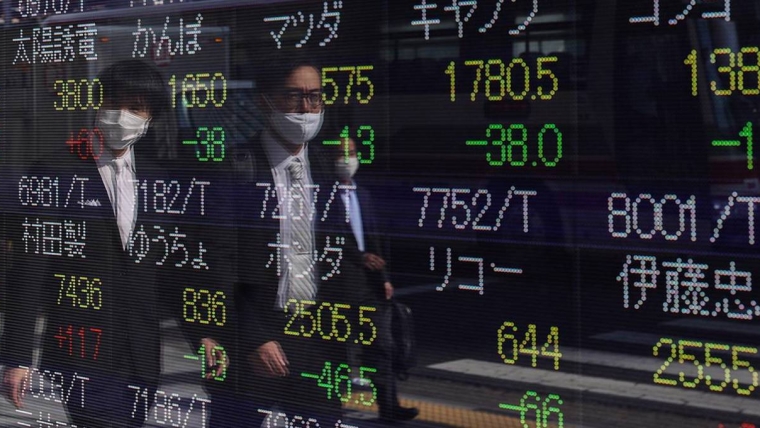
By Hoe Ee Khor and Kimi Xu Jiang*
Hawkish shifts in the US Federal Reserve’s monetary policy have often led to heightened financial and economic stress in emerging economies. In the early 1990s, the Fed raised interest rates preemptively to curb inflation, precipitating the 1994 Mexican “tequila” crisis. In 2013, the Fed signaled its intention to tighten monetary policy, resulting in the major emerging-markets sell-off known as the “taper tantrum.”
Given the region’s history, one might expect that policymakers in the ASEAN+3 countries – the ten members of the Association of Southeast Asian Nations, together with China (including Hong Kong), Japan, and South Korea – would be particularly anxious about the Fed’s increasing hawkishness. Indeed, the Fed’s recent efforts to curb high and persistent inflation have prompted fears of a regional financial crisis, similar to the Asian financial crisis of 1997.
But the Fed’s actions will not have as much impact on the region as they did in the late 1990s. Today, the ASEAN+3 economies are stronger and more durable, making a 1997-style financial meltdown improbable.
The 1997 crisis was mainly caused by a combination of macroeconomic imbalances and sharp capital-flow reversals, triggered by speculative attacks on the Thai baht and other regional currencies. East Asian economies had enjoyed a period of rapid growth before the crisis – funded by surging capital inflows and excessive foreign lending – but without sound regulation and policy. Most Asian currencies were still pegged to the US dollar, bank regulatory frameworks were simpler, and capital buffers were low.
Painful structural reforms have helped ASEAN+3 economies rebuild balance sheets, strengthen economic fundamentals, and establish robust regulatory frameworks. The region’s policymakers, more skillful in navigating uncertainties and managing shocks, have assembled a formidable, multi-layered $8.8 trillion financial safety net. In addition to their foreign reserves – $7 trillion in total – the ASEAN+3 economies can now rely on multilateral swap arrangements like the Chiang Mai Initiative Multilateralisation agreement, and the International Monetary Fund.
Most of the emerging ASEAN+3 economies have run current-account surpluses in recent years. In contrast, crisis-hit economies ran persistent current-account deficits and relied on external funding in the years before the 1997 financial crisis. The ASEAN-4 (Malaysia, the Philippines, Indonesia, and Thailand) have run current-account surpluses for most of the past two decades – except for Indonesia, which ran a small current-account deficit over the same period.
Moreover, banks in the region are much sounder and more resilient. They are generally well-capitalised and have sufficient liquidity buffers since adopting the Basel regulations after the 2008 global financial crisis. As a result, banks were generally on a sound financial footing going into the COVID-19 pandemic, allowing them to dip into their regulatory and countercyclical capital buffers when necessary.
Furthermore, the size of the local-currency bond market in the ASEAN+3 region has increased to 123% of GDP this year, compared to 74% of GDP in 2000. With the ability to borrow in local currency, debts are no longer as exposed to currency mismatch as they were during the Asian financial crisis.
Likewise, capital flows have not been surging into the region in recent years as they did in the run-up to the last two financial crises. In ASEAN-4 markets, net capital outflows have been relatively mild so far, and capital inflows consist mainly of relatively stable direct investments. In South Korea, portfolio inflows increased during the pandemic as investors saw Korean bonds as relatively safe assets.
Lastly, East Asia’s economies – especially the crisis-affected ASEAN-4 economies and South Korea – no longer operate tightly pegged exchange-rate regimes, allowing their currencies to fluctuate and adjust to market forces as a buffer against shocks. The few economies that still peg their currencies to the US dollar or a currency basket have managed to fend off speculative attacks through strong foreign-exchange buffers and prudent fiscal policies.
Admittedly, there could be pockets of weakness across the region. The COVID-19 pandemic is not over yet, and each economy’s recovery trajectory will depend on its ability to adapt and seize new opportunities. US monetary tightening could adversely and unevenly affect financial markets in ASEAN+3 countries, and these developments might trigger portfolio outflows similar to the taper tantrum of 2013. In recent months, investors sold stocks in South Korea and the Philippines and reduced their positions in Indonesian and Malaysian bonds. So far, however, these outflows have been relatively insignificant and do not threaten financial stability.
China’s expected economic rebound will also contribute to the region’s recovery, as it did after the 1997 and 2008 crises. China’s economy is forecast to bottom out and regain momentum during the second half of 2022, with full-year growth expected to come in at around 4.8%, despite significant downside risks.
Rising US interest rates will probably lead to some capital outflows and higher borrowing costs for the ASEAN+3 economies. But a full-blown 1997-style financial crisis remains unlikely. The region has moved on.
Hoe Ee Khor is Chief Economist at the ASEAN+3 Macroeconomic Research Office (AMRO). Kimi Xu Jiang is an economist at AMRO. Copyright: Project Syndicate, 2022, and published here with permission.
4 Comments
CENTRAL BANKS AREN’T Insisting They Are Is the Root of So Much Error…and Pain
Though the stock market may be gripped by rate-hikes-are-nearly-over near-euphoria, the physical space doesn’t have the luxury of delusion. If the Fed’s hawkishness really is and has been the source of all our problems, then you’d think more assets would share the relief (rally). Instead, you get the sense mostly professional investors are just itching to buy equities for whatever reason they can sell to their clients with the Fed’s name attached to it somewhere.
Energy markets, on the other hand, they are being dragged downward by clear fundamentals. Two of the three, in fact. Of the trio, the supply side remains as price-positive as ever, the weekly US EIA data confirming little domestic improvement. OPEC isn’t exactly cooperating, either.
Instead, WTI is pulling new multi-month lows as its futures curve gets reshaped by considerable worries over, frankly, disastrous demand figures, especially use of gasoline (see: below). For the final week in July 2022, total gasoline “supplied” was barely 8.5 mbpd, a number so bad it was less than what Americans had used in the COVID-riddled summer two years ago.
Good article and sound analysis.
Yes, I agree. We are unlikely to see a repeat of the Asian crisis of the late 90ies. Instead, we are about to see a massive financial crisis in New Zealand, caused by interest rate hikes that started when the property market was already correcting and now fueled by significant further interest rate hikes that have already caused first home buyers to be bankrupt.
Oh dear. Complacency is always a danger sign.
All might indeed be well, but then again, crises happen slowly at first, then accelerate rapidly. Everything looks fine until it doesn't.
The trouble is that there will be USD loans in the system and everyone will be desperately trying to repay them as the USD goes higher and higher against the local currency. Not everyone will be able to replace the USD loan with local currency loans and there will be unexpected failures of respectable companies. This stuff is like a king tide going out, it goes out faster and further than you expect.
The local currencies either have to put up interest rates or collapse against the USD. If they put up interest rates the local businesses go bust and unemployment rises. Civil unrest and political instability arise in previously stable places.
The US will put up their interest rates for as long as they see fit to do so.
Personally, being a cautious sort of chap when I think things are dangerous, I think there is a chance the US might get serious about pushing interest rates up to a level that intentionally puts pressure on China. No one is talking about this. The US put strategic issues first, often dangerously so. Full Spectrum Dominance and all that clever sounding delusional crap.
If they do, its a moot point who gets hurt the most, China or the US. As we saw with the daft anti-Russian sanctions, these clever schemes often backfire badly. Winning battles and losing the war. It looks like the sanctions are destroying the economies of the NATO allies of the US and benefiting Russia. Shades of Athens and the Melians, perhaps? Yes, I know, Athens was the rising power and Sparta won, but all the same, sacrificing your allies is never a good look. Rome collapsed in under nine years. Is Biden the US equivalent of Vespasian?
We live in interesting times.

We welcome your comments below. If you are not already registered, please register to comment
Remember we welcome robust, respectful and insightful debate. We don't welcome abusive or defamatory comments and will de-register those repeatedly making such comments. Our current comment policy is here.